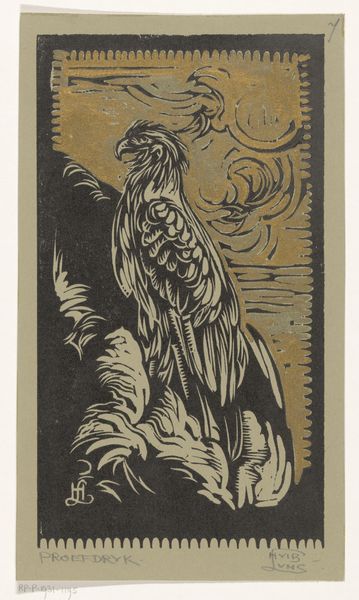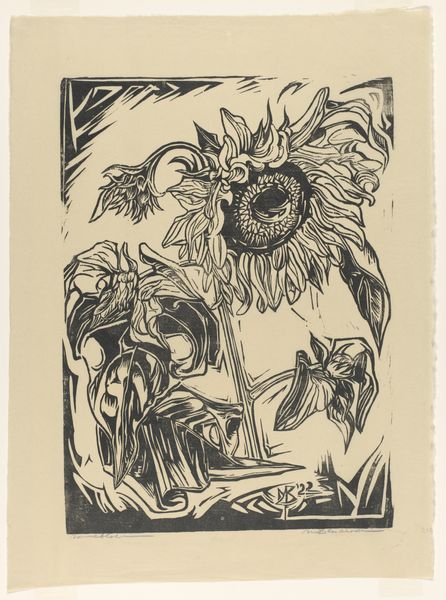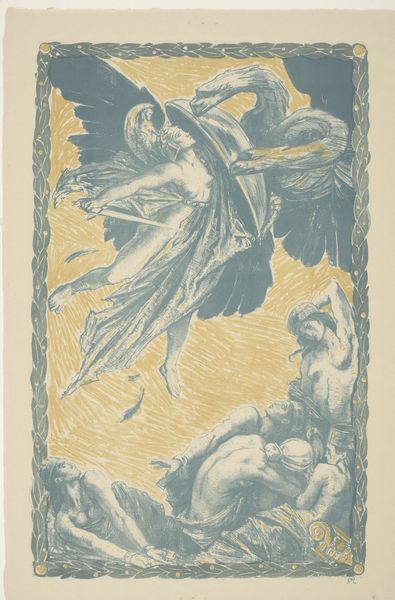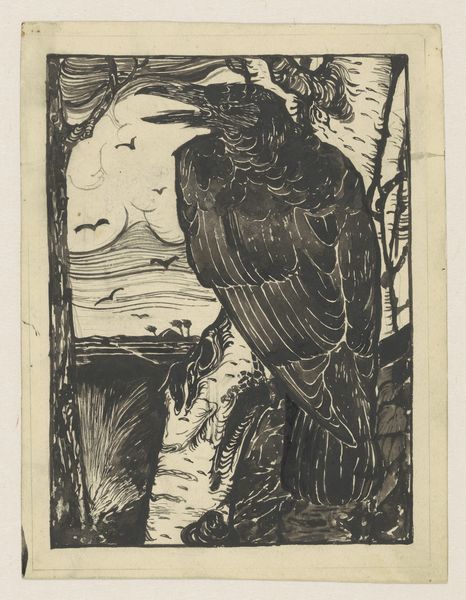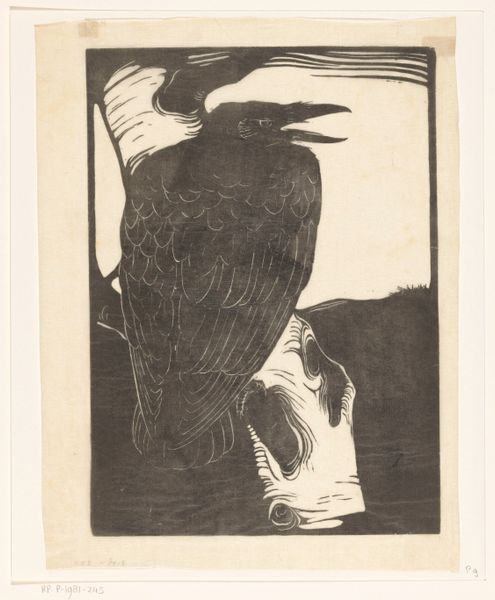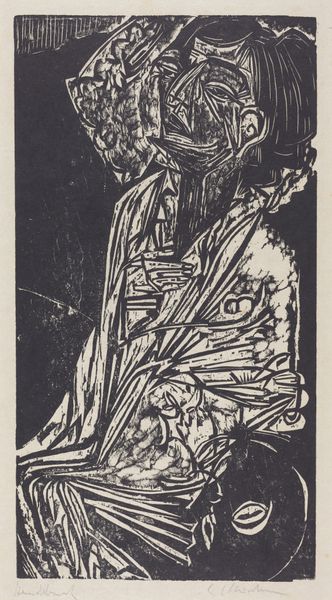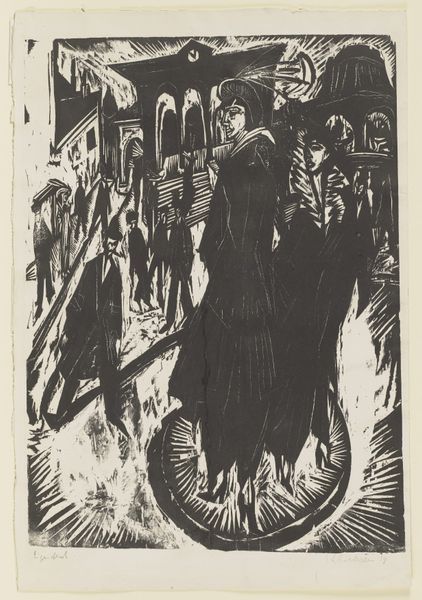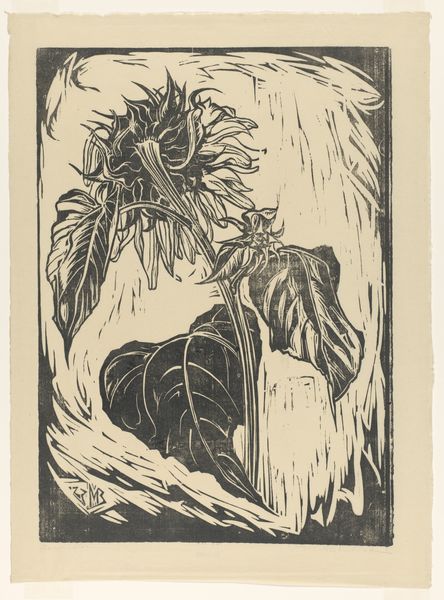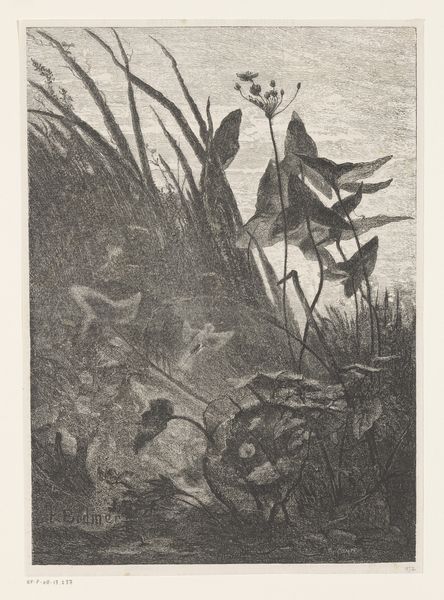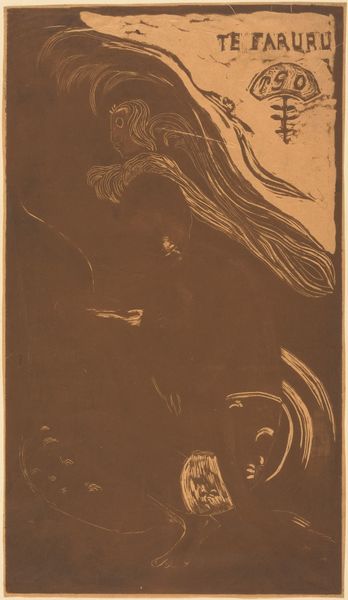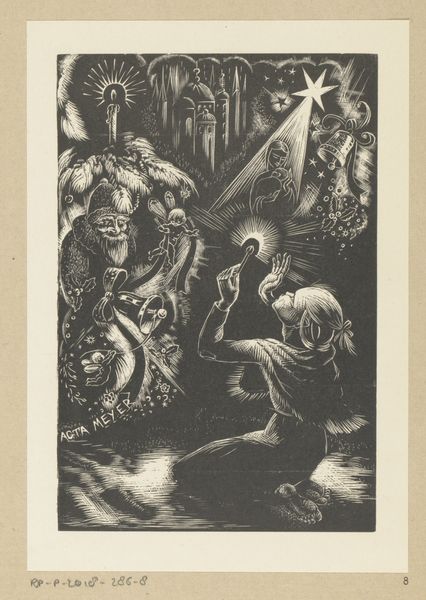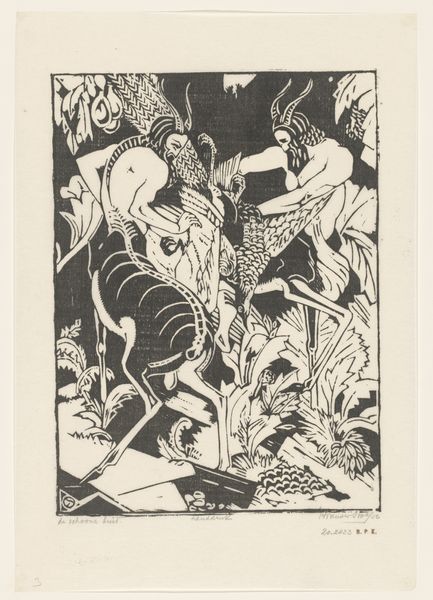
graphic-art, print, woodcut
#
graphic-art
#
ink drawing
# print
#
pen illustration
#
landscape
#
figuration
#
linocut print
#
expressionism
#
woodcut
#
line
#
watercolour illustration
#
pencil art
Dimensions: height 475 mm, width 320 mm
Copyright: Rijks Museum: Open Domain
Curator: Ah, here we are standing before "De Condors" a woodcut print by Huib Luns, created around 1915. It resides here at the Rijksmuseum. Doesn’t it just make you feel as though you are staring into something both magnificent and deeply melancholic? Editor: Yes, immediately. It's this interplay of texture—the roughness of the woodcut against the inherent elegance of birds—but it really grabs me is the sheer amount of labor. Imagine carving out each of those lines to create that almost sun-like background radiating from the horizon! Curator: Absolutely! You can almost feel the artist's hand guiding the blade. The angular, bold lines that define the condors' forms give them this really haunting presence. Almost gargoyle-like, yet also proud and solitary. Do you sense that isolation, that almost mournful quality, as I do? Editor: Mournful, maybe… or just brutally efficient. The high contrast isolates these figures, emphasizing their physicality. It’s interesting to consider that each line is a decision, a removal of material that cannot be undone. It’s such a tactile medium to represent these scavengers, literally carving out their existence. Curator: That's fascinating. It reminds me of the traditional association of the condor with strength, vision, and immortality – this almost totemic representation, don't you agree? Luns, known for his own intense spirituality, it seems quite fitting here. Editor: Right. And what materials were available to him? What type of wood, what knives or gouges would be used to carve that design, the composition is great. Consider the cultural value that would be assigned to graphic arts at the time too—did Luns carve the wood himself or did he employ craftspeople? This is how cultural messages were amplified back then. Curator: And the way that he uses such a graphic, blocky style also almost transcends the constraints of the material... it’s raw and unflinching, yet there’s also such control of light. The white space truly sings against the dark. Editor: I concur entirely. To consider how readily such imagery was spread across mass culture, especially due to cheap access to materials, it’s intriguing. We should examine how many different variations were published during his lifespan for "De Condors". It truly would indicate his popularity back then. Curator: Seeing "De Condors" again reminds me to appreciate that inherent duality in Luns. So skilled at evoking emotion. Thank you. Editor: And, again, it is a vivid reminder to consider the value we now place on the things made available by ordinary means. Thank you as well.
Comments
No comments
Be the first to comment and join the conversation on the ultimate creative platform.

